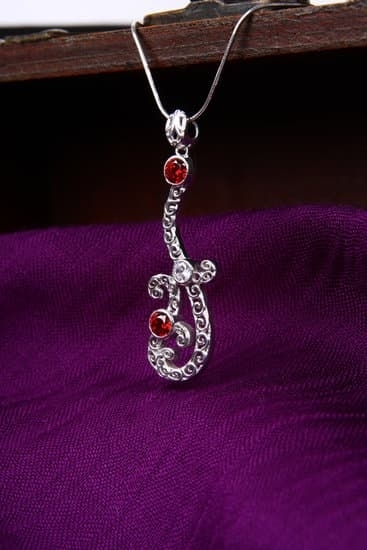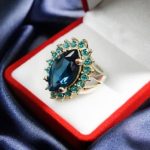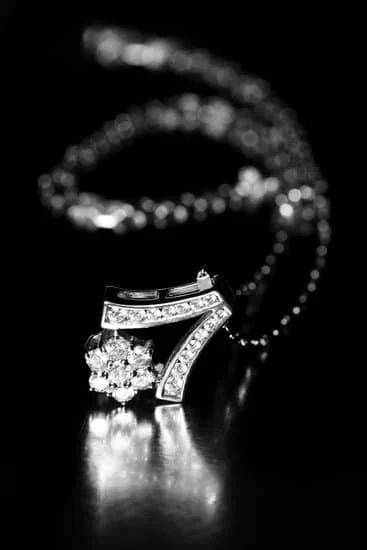The 1920s was a period of great artistic consideration when it came to jewelry design, and Cartier was ahead of the pack in this regard. During this decade they produced some highly sought after Tut-Inspired Art Deco style jewelry, which has since become one of their most iconic pieces.
The use of bold colors, geometric shapes and intricate details demonstrated an incredible level of skill and workmanship that is still revered today. The combination of ancient Egyptian influence, with modern art deco styling made for dazzling pieces that were immediately recognizable for those in the know.
Cartier’s Jewelry from the 1920s popularized its own unique style during this time period. From the luxurious diamonds to the detailed carvings on each item, every piece carried a signature look that set it apart from any other designer back then.
Intricate patterns based on King Tutankhamen’s tomb decorations appeared throughout this era and gave a regal look to many items produced by Cartier. This helped create a wide fan base full of admirers with diverse backgrounds who could relate to their gorgeous pieces because they represented the shared interest in ancient culture along with a well-crafted piece meant to live on through generations.
The fact that these traditional symbols and imagery existed within such a cutting edge background made these pieces stand out even further than expected. They were an instant hit among society’s elite as soon as they were available for purchase, and people from all over would flock to stores just to get one glance at these remarkable works of art.
Though some may have viewed them as merely fashionable objects back then, Cartier’s famous Tut-inspired Art Deco Jewelry creations truly exemplify the amazing skill that characterized this movement in jewelry design in early 20th century Europe.
History
Cartier’s King Tut-inspired jewelry from the 1920’S reflects the degree to which Ancient Egyptian motifs were extremely popular during this period. Egyptomania, as it was labeled, was a fascination with all things Egypt that swept through Europe and even made its way to the Fashion trends of New York’s high society. Cartier designers began creating pieces in silver and gold designed with motifs inspired by King Tutankhamen’s tomb which had been discovered in 1922.
The pieces, such as rings and necklaces, featured bright blue enamel lapis lazuli scarabs depicting figures of Horus or Ra decorating the front and often accompanied by curved embellishments. A few included larger scarabs set amidst intricate designs like starbursts or geometric shapes.
The small scarab figured reminded people of the spirit depicted in many ancient artifacts such as chariots, helmets or battle axes while imparting an Art Deco style with its gooseneck curves harkening back to past kings yet modernized with its updated gemstones like emeralds, rubies or diamonds.
As time went on, Cartier continued to produce different collections driven by antiquity as well as French Deco styles using techniques like straw cutting for diamonds, hand engraved patterns for gold and new materials including ivory to create various pieces for one trend after another over the years.
Their signature pyramid line combined slender platinum settings with colored stones structured into strong triangular framework thus marrying together Art Deco styles originally from the 1920’S blended with more recent designs made without compromising any of their original beauty or timeless appeal kept alive from today’s perspective.
Features
Cartier Art Deco King Tut-inspired jewelry from the 1920s is a timeless classic that still captivates the modern world. Crafted in both fine silver and gold, this exquisite collection of jewelry featured intricate design details consisting of geometric shapes, bold lines and an emphasis on symmetry.
The pieces were evocative of ancient Egyptian art deco style with architectural elements such as pyramids, abstract birds, scarabs and representations of deities. The results were complex yet balanced designs and a renewed appreciation for this period of history and design.
The use of gemstones to embellish these looks provided a stunning array of colors and sparkle to many pieces. Bright yellow citrine encrusted on rings, earrings and pendants added depth and brilliance while ruby was often used to create a regal effect which was complemented by blue sapphires adding cool undertones to the look. Pearls played an important role as well highlighting a softer element that beautifully laced together all the other components in these works of jewelry art.
Comparing Cartier Art Deco jewelry from the 1920s to other fashion styles from this period yields interesting results: the preference for simplistic colors dominated the capsule wardrobe by day whereas evening attire leaned towards more ornate flapper dresses with sequins and rhinestones hinting at luxury sophistication unparalleled today. Sharing similarities with Egyptian pottery vessels covered in hieroglyphics or Islamic calligraphy filled with traditional motifs, Cartier’s jewels encapsulated mythology duality.
Bustles turned into slim silhouettes as everyday life became simpler but also more exciting filled colorful accessories crafted by skilled craftsmen who presented each piece as miniature works of art created for individual expression in a fast-moving society exploring new boundaries.
Signature Pieces
The jewelry designed by Cartier around the 1920s with Tut-inspired design is considered some of their most iconic work. Customers were drawn to its grandeur and uniqueness, as it combined a modern art deco element with ancient Egyptian culture. As one of the first companies to incorporate Egyptian designs into luxury jewelry, Cartier has become an icon in the world of artistic expression and fashion.
The signature pieces from this collection included geometric shapes and hieroglyphic motifs, giving it a distinct look that was perfect for an elegant evening look. Cleverly designed bangles were made up of colorful gemstones that captured the eye with their detailed cuts and exotic flair.
Earrings featured dangling scarab motifs, further exemplifying their connection to Egypt’s history and mythology. The brooches were also adorned with rubies, sapphires, jade, turquoise or enamel-painted multicolored glass beads in symbolic patterns as forms of decorative embellishment.
In addition to these beautiful designs, vintage Cartier adverts from that time included evocative images and captivating artwork which focused on these Tut-inspired pieces. This added to the allure of these amazing pieces and made them even more attractive for customers – particularly those who have a passion for antiques; eager to get their hands on something from such a remarkable era.
To this day, these are some of the most precious gems found in any antique shop or private collection. Furthermore, Cartier’s Tut-inspired art deco jewelry marked an unforgettable period in jewelry design that continues to influence modern aesthetics and trends today.
Inspiration
Modern day admirers of King Tutankhamun’s incredible life and legacy have come to appreciate the intricate symbolism and themes behind his design motifs, especially in his elaborate burial mask. Ancient Egyptians believed that heavy use of realistic figures, such as the masks they placed upon their Pharaohs, were effective in providing a spiritual pathway to connect with their Gods.
Similarly, during the roaring 20’s, some of the most iconic jewelry designs were inspired by this ancient King’s regal influence. Among them was the collection created by luxury jeweler Cartier.
Cartier has been a well-known icon in the jewelry industry since 1847 when it was founded by French jeweler Louis Cartier. At this time the company shook up traditional design standards of jewelry-making; brilliantly revamping aged techniques in order to craft pieces representative of modern fashion trends and appeal.
However, Cartier had its design team go back to look at Ancient Egypt for inspirations when creating what is now known as their Art Deco King Tut-inspired Jewelry range from 1919 onwards.
The Cartier range takes inspiration from ancient Egyptian culture, with gold necklaces having modernised touches of Tutankhamun’s classic design style such as smoothed sphinxes across its chain length for example. Other features include depiction familiar symbols like a winged scarab beetle set atop bright scarlet stones – signifying rebirth – or an eye protecting cobra encrusted around collars and earrings embellished with zigzag patterns paying homage to Egypt’s most revered Pharaohs temples walls.
The Cartier range also has earring sets featuring crossed golden wings indicative of eternal guardianship and colourful floral motifs stretched from heart charms or circles – typically offering protection against danger or bad luck – all being widely incorported into many of their piece designs. No matter how it is interpreted, what each ‘Carrtier Art Deco King Tut’ piece conveys is a longing for something higher than this world making it truly priceless.
Popularity
The Cartier Art Deco jewelry has a rich and vibrant history that began in the early 1920s. It became popular extremely quickly and was quickly embraced as an international symbol of luxury and sophistication. The unique blend of Art-Deco, King Tut-inspired designs, coupled with its bold colorful palettemake this collection stand out from the others in terms of beauty and intricacy.
The Cartier Art Deco jewelry featured the use of cabochons, geometric patterns and Egyptian motifs to create truly unique pieces. The King Tut-inspired design was considered a triumph amongst aspiring aesthetes of the time thanks to its ability to combine traditional Egyptian designs with modern innovation. This combination meant that the pieces could evoke feelings of luxury without compromising on quality-including incredible craftsmanship by skilled artisans.
As a result, it rose in prominence rapidly-not just amongst fashionable circles but Hollywood stars too (from Wallace Beery to Joan Crawford). Eventually it gained even more worldwide recognition following Pamela Cazenove’s magnificent performance as Cleopatra donning a necklace inspired by the artistic style.
After her breakout role, Cartier saw increased demand for their stunning jewels which resulted in expansion efforts throughout Europe and North America. As such, this period helped solidify Cartier’s legacy as one of the premier jewelers representing sophistication and timeless elegance throughout the world today.
Modern Reinterpretations
The influence of the ancient Egyptian aesthetic still ripples through modern fashion, jewelry and design today. This can be seen in the Cartier Art Deco collection of the 1920s, which is characterized by jewelry inspired by King Tutankhamun.
The bold geometric shapes, vibrant colors and symmetrical features of the Art Deco pieces echo those found in traditional Egyptian objects. By taking these influences and applying them to their designs of watches, brooches and other pieces of jewelry, Cartier created an array of aesthetically pleasing works that have since gained acclaim throughout the world.
Though Art Deco is most often associated with this specific period in time, contemporary fashion brands and designers are revisiting its principles and reviving it with a modern twist. This can be seen in the use of dramatic angles and lurid color schemes on refined yet ornate designs.
Pieces like new rings with King Tut motifs have become popular additions to collections like Bulgari’s Serpenti Forever line or Gucci’s Garden Collection; all offering bold yet understated reinterpretations of Cartier’s renowned accessories from nearly a century ago.
The influence of certain aspects from the Egyptian culture is sure to continue for some time due to its long-held symbolism for royalty and power alike; an attribute that has been used for centuries within various eras of art and culture. One example comes from Dior whose 2021 Cruise Collection featured scarab beetle brooches as well as many designs displaying winged vulture elements; recognizable symbols associated with Queen Nefertiti’s rule during ancient Egypt times.
It is clear to see how much respect designers have managed to keep while simultaneously introducing new visuals into their creations – something that had been first thought up by Cartier over 100 years ago.
It is interesting to observe how luxury brand’s have managed to draw upon qualities other than just aesthetics when it comes to reviving old works with a modern edge. It is likely that Tutankammun-inspired designs will remain relevant within today’s dress codes, especially since it plays off global fashion trends while also offering robust subtle details bearing great emotional significance – exactly what we need nowadays when it comes styling our wardrobes.
Conclusion
The history of Cartier Art Deco jewelry from the 1920s is an enduring one, with its iconic King Tut-inspired pieces being some of the most sought after of all time. The roots of Cartier’s Art Deco style can be traced back to the rule of Pharaoh Tutankhamun, or King Tut as he is commonly known.
During his rule, Egyptians had a strong preference for bold and intricate designs, which were highly influential in how jewelry was made and sold in Europe during the twentieth century.
Cartier in particular embraced Art Deco styles featuring prominent geometric patterns and shapes like stars, spirals and crescents. Pieces such as necklace charms, rings and broaches adorned with gemstones or enameled accents were all popular among their customers at the time. While these pieces are still widely coveted by collectors today, what sets them apart is their timelessness. Everything from King Tut-inspired tableware to furniture has been updated throughout the years yet these motifs endure in status and mystique.
In addition to being a popular art movement within its own right, Cartier’s Art Deco styles also became entrenched in European culture more broadly as many emerging designers used them as inspiration for incorporating into their own work. While trends may come and go throughout history, it’s clear that Cartier’s original use of ancient Egyptian elements gave way to a timeless design aesthetic that will remain relevant for generations to come.
Transcending cultures and eras alike, King Tut-inspired Art Deco jewelry continues to breathe new life into modern day accessories; reminding us all that no matter where we look for inspiration there are always stories waiting to be told through our adornments.

Welcome to my jewelry blog! My name is Sarah and I am the owner of this blog.
I love making jewelry and sharing my creations with others.
So whether you’re someone who loves wearing jewelry yourself or simply enjoys learning about it, be sure to check out my blog for insightful posts on everything related to this exciting topic!





